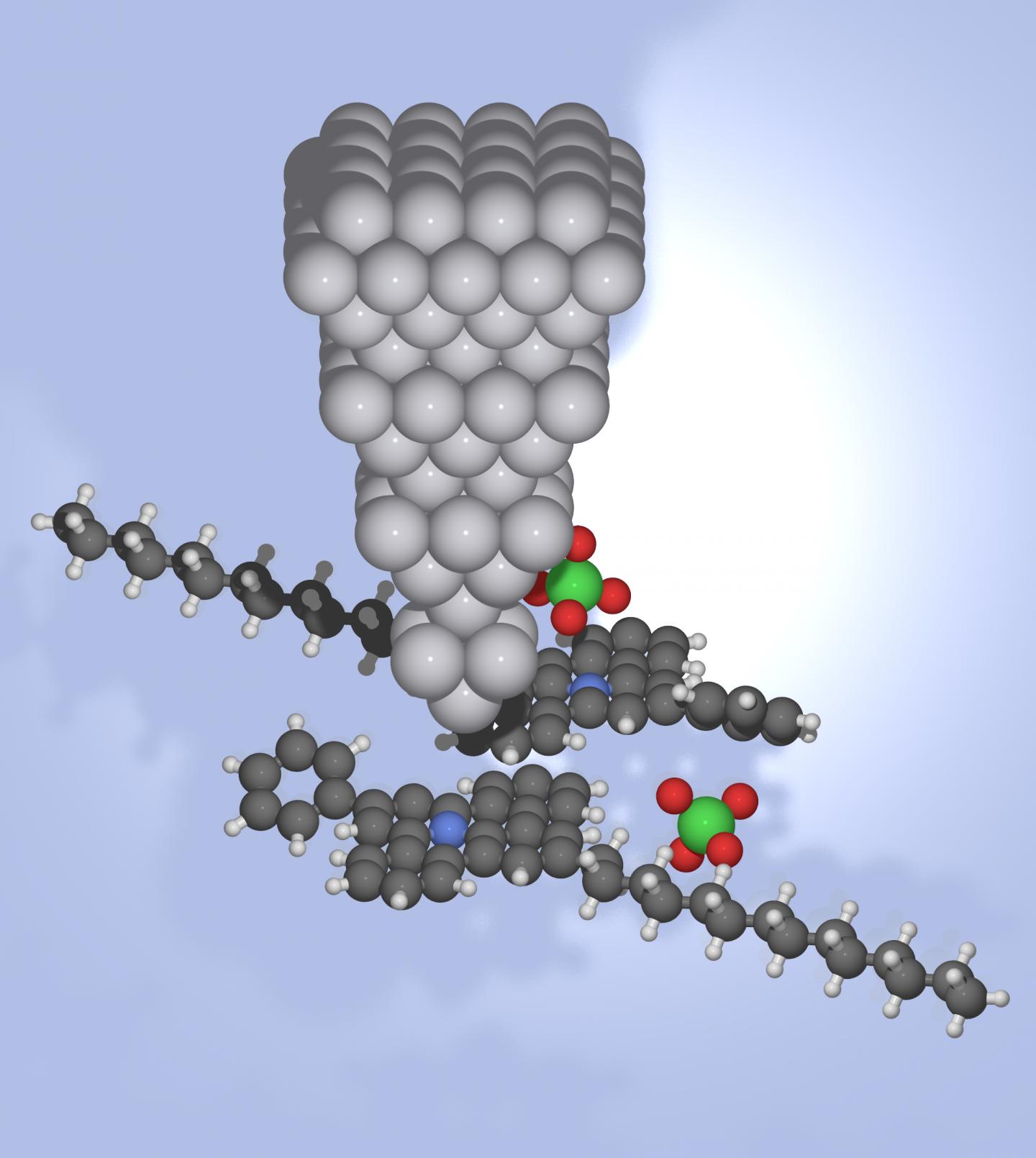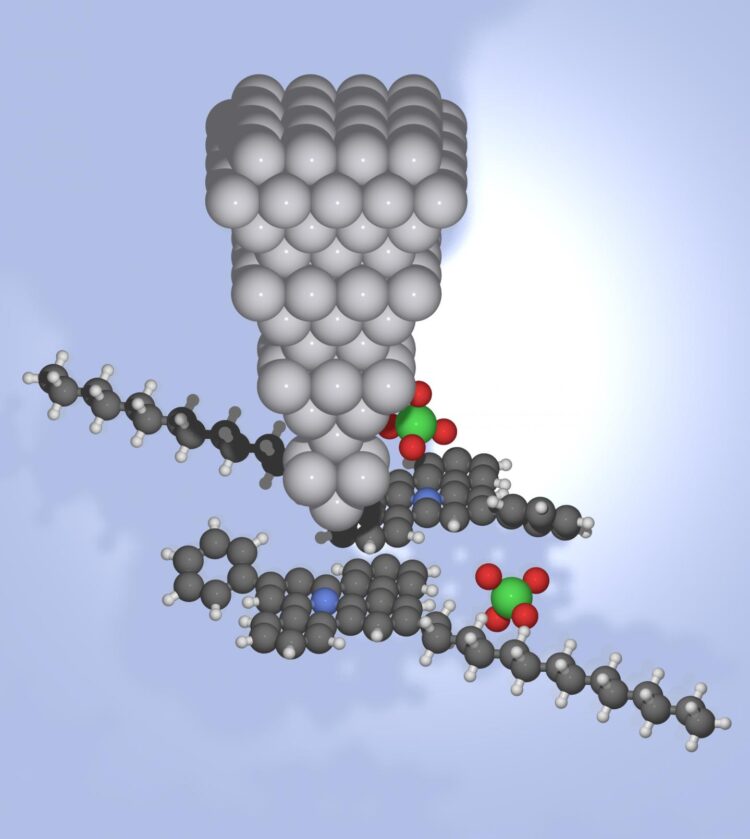Researchers have discovered a single molecule ‘switch’ that can act like a transistor and offers the potential to store binary information

Credit: Dr Kunal Mali, KU Leuven
Computer hard drives of the future could be made up of smart molecules.
Researchers have discovered a single molecule ‘switch’ that can act like a transistor and offers the potential to store binary information – such as the 1s and 0s used in classical computing.
The molecule is around five square nanometres in size. This means that more than one billion of them would fit onto the cross-section of a human hair.
The international team of scientists behind the breakthrough believe that molecules like the ones they have discovered could offer information density of around 250 terabits per square inch – which is around 100 times the storage density of current hard drives.
Although the researchers do not expect that the particular molecules they discovered will be used in real hard drives, the study is an important proof of concept that brings us closer to the brave new world of true molecular electronics.
In the study, molecules of an organic salt can be switched using a small electrical input to appear either bright or dark – providing binary information. Crucially, this information can be written, read and erased, at room temperature and in normal air pressures. These are important characteristics for practical application of the molecules in computing storage devices. Most previous research into molecular electronics for similar applications has been conducted in vacuum and at very low temperatures.
Dr Stijn Mertens, Senior Lecturer in Electrochemical Surface Science at Lancaster University and lead researcher on the study, said: “There is an entire list of properties that a molecule has to possess to be useful as a molecular memory. Apart from being switchable in both directions under ambient conditions, it has to be stable for a long time in the bright and dark state, and also spontaneously form highly ordered layers that are only one molecule thick, in a process called self-assembly. Ours is the first example that combines all these features in the same molecule.”
In laboratory experiments, the research team used small electric pulses in a scanning tunnelling microscope to switch individual molecules from bright to dark. They were also able to read and erase the information afterwards, at the press of a button.
During the switching, the electric pulse changes the way the cation and the anion in the organic salt are stacked together, and this stacking causes the molecule to appear either bright or dark. Apart from the switching itself, also the spontaneous ordering of the molecules is crucial: through self-assembly, they find their way into a highly ordered structure (a two-dimensional crystal), without the need for expensive manufacturing tools as is the case in currently used electronics.
“Because chemistry allows us to make molecules with sophisticated functions in enormous numbers and with atomic precision, molecular electronics may have a very bright future,” says Dr Mertens.
###
The research is detailed in the paper ‘Ambient bistable single dipole switching in a molecular monolayer’, which has been published by the journal Angewandte Chemie.
The paper’s authors are: Kang Cui, from KU Leuven and the University of Jinan; Kunal Mali and Steven De Feyter of KU Leuven; Dongqing Wu, Xinliang Feng and Klaus Müllen of the Max Planck Institute for Polymer research; Michael Walter of the Freiburg Centre for Interactive Materials and Bioinspired Technologies and Fraunhofer IWM; Stijn Mertens of KU Leuven and Lancaster University.
This work was supported by the Fund for Scientific Research-Flanders (FWO-Vlaanderen), by KU Leuven and by the Austrian Science Fund (FWF).
DOI: doi.org/10.1002/anie.202004016
Media Contact
Ian Boydon
[email protected]
Related Journal Article
http://dx.





